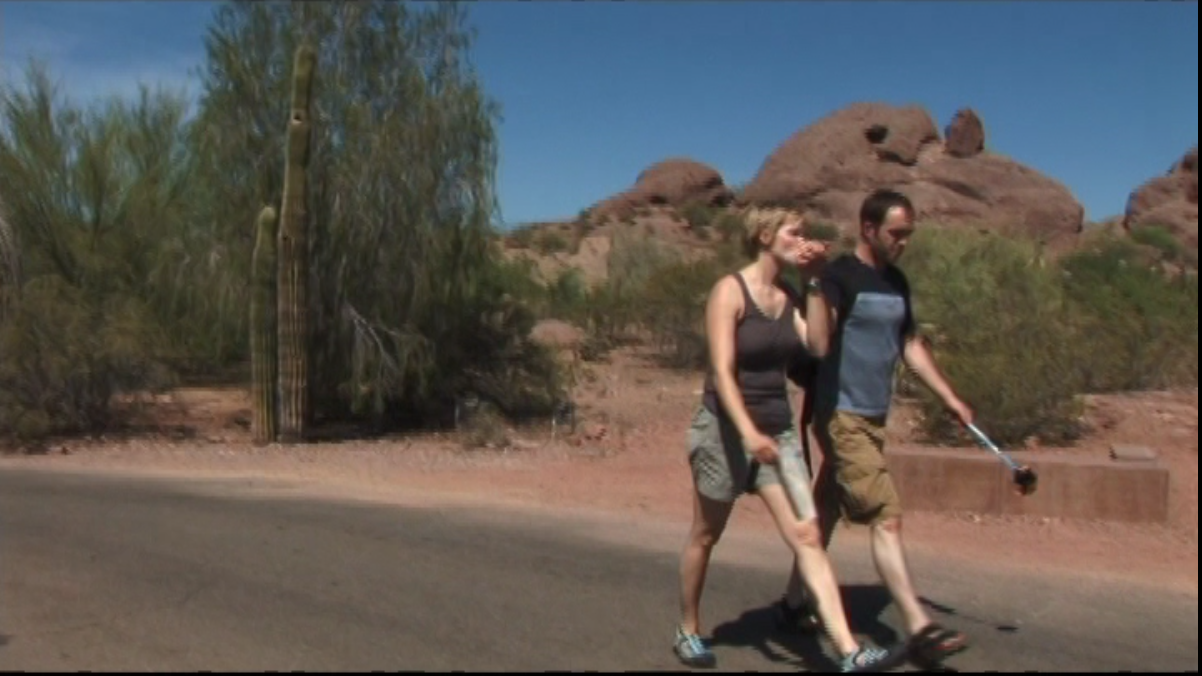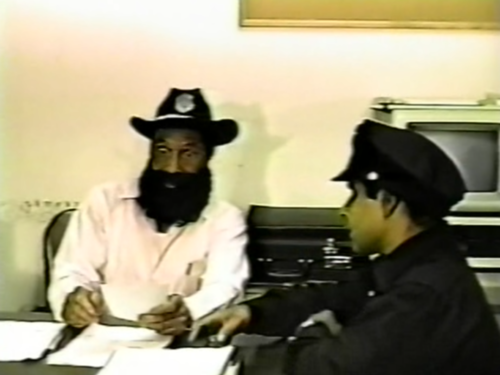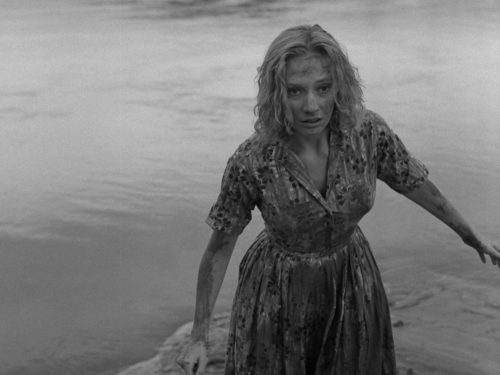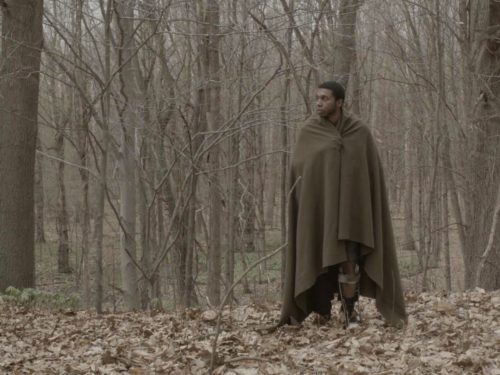Following his creative breakthrough with Quietly on By, Ross went to the Arizona desert to make a film about a contemporary romance, inspired by fallen civilizations and dystopian futures
The initial idea for Hohokam came to Frank V. Ross after watching a television documentary on Phoenix, Arizona. The program was about some of the region’s ancient civilizations, notably the Hohokam, who thrived for centuries in the area before mysteriously vanishing around 1400 B.C. Ross was struck by how such an innovative and well-established society could just disappear, leaving only traces of its long history for the next civilization to build on top of. He contemplated how “perfectly arrogant” it was to name a place “Phoenix” — like it rose so majestically from the ashes of the area’s previous inhabitants — and how the current society could disappear just as suddenly as those that came before.
Ross decided to shoot his next film in Phoenix, setting Hohokam’s narrative during an average week in the lives of Lori Dougherty (Allison Latta) and her boyfriend Anson James (Anthony Baker). The film takes place during an odd juncture in the couple’s relationship; they are past the initial courtship — familiar enough to pop each other’s zits — but not quite to the point of settling into a full-time commitment. Throughout the film, Anson and Lori lead separate lives at work — Lori even has what Ross calls a “work boyfriend” who she harmlessly flirts with at her desk. When together, they are shown mapping out boundaries and adjusting to each other’s idiosyncrasies. Anson still gets nervous before meeting Lori’s friends and Lori struggles to get used to Anson, an ex-Marine, openly carrying a handgun. They bicker a lot, but mostly about little things that blow over in no time. Love is certainly there between them, but they make each other work for it.
Hohokam’s action may appear far removed from the ruminations on fallen civilizations that sparked its creation. But while writing the screenplay, Ross began imagining the film from another perspective. His scenes, built around Anson and Lori’s daily routines and interactions, began to feel like dystopian science fiction. He recognized how much the world around him resembled the future George Orwell predicted in 1984 (1949). Most of Hohokam takes place in sterile or barren environments. Lori works in a cubicle taking customer service calls; Anson paints directive lines onto the hot concrete of Arizona parking lots. Lori jogs through landscapes overshadowed by giant corporate logos, and characters identify themselves over the phone by credit card numbers. The once outlandish technologies and restrictive social structures of Orwell’s nightmare had ingrained themselves in contemporary reality without the world really noticing.

Of course, a dystopian science fiction film by Frank Ross is not going to be your run-of-the-mill genre movie. The above examples are only the most obvious signs of any Orwellian influence on the film and, even then, they are not depicted overtly. Hohokam is mostly comprised of scenes of its characters working or set during life’s in-between moments, as they get ready to go somewhere, laze around the house, commute or use the restroom (few films can claim to spend as much time with its characters’ bodily functions as Hohokam). “Climax” points do not involve stand-offs with oppressors, but are reached when Lori’s favorite mug breaks and when Anson accidentally slams his head on the cabinet above the stove. The biggest event in the film is a weekend trip to the zoo.
Related: Frank V. Ross: The Split Tooth Interview Pt. 1 — Quietly on By and Hohokam
Instead, Ross works the dystopian inspiration by subtilizing it down to its essence, building it into Hohokam’s structure to explore a society in which the restrictions placed upon its inhabitants run deeper than any physical barriers or sci-fi surfaces. In this way, Hohokam offers a crucial insight into the workings of all of Ross’ films. He explores a culture with a twisted value system, where room is rarely left for personal pursuits or reflection amid the onslaught of social, financial and occupational pressures placed upon individuals. Ross dramatizes how characters can act as their own censors. Identities become compartmentalized as individuals mask their personalities to fit specific social situations. Perhaps most importantly, characters are shown to restrict their own vision, allowing themselves to get so caught up in functionary tasks and minor trifles that the wider world becomes a blur upon their imaginations.
With characters rarely being able to grasp at the extent of what they are experiencing in any given moment, most of the discoveries being made in Hohokam take place beyond their understanding. Ross creates a sort of double consciousness, putting Anson and Lori’s states of awareness into conflict. He uses his camera and sound design to place his characters and their limited perception into greater perspective as they deal with everything a typical day throws at them.
Hohokam builds a nuanced understanding of how its characters relate to their environments. Throughout this process, Ross refuses — or perhaps it’s better said that he challenges our efforts — to treat his characters as “types.” Their everyday struggles are portrayed as individualized experience rather than as archetypal representations of 9-to-5 living. For instance, Ross introduces us to Lori in her cubicle, slouched over her computer and dealing with a frustrating customer service call. She uses a “professional” voice on the phone and resembles one of the apathetic desk jockeys from Office Space (1999). But Ross gradually introduces more elements into the scene, moving through a series of character beats that hint toward a greater range of Lori’s personality as she reacts to who is around her. She gets a chance to loosen up a bit when Ron (Lonnie Phillips), her work-boyfriend, shows up in her cubicle while she is on the phone. His presence creates an outlet for humor as she makes exasperated faces at him while holding her professional tone of voice with the customer. Moments later, she and Ron get a chance to privately gossip, before having to scramble to put on straight faces when “The Jeffery” (Joe Swanberg) interrupts their jokes about a departing coworker.
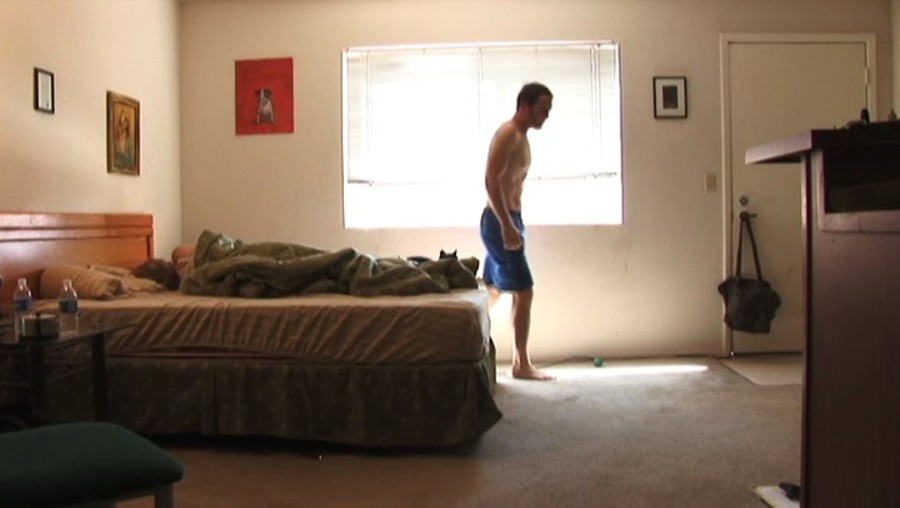
Ross structures his narrative by placing his characters in the same types of situations set in different environments and cast under varying influences. Hohokam follows Lori’s introduction at work with a scene of her day-drinking at home with her queer friend Guy (Danny Rhodes). Here, Lori’s playfulness is put on full-display without any of the inhibitions she held at the office. She goofs around, gossips freely and burps loudly. She even puts on boxing gloves to play-fight Anson when he arrives, making a show for her friend out of the self-defense lessons she has been receiving.
Hohokam’s characters are temperamental. Ross draws us to how impulsive, contradictory and difficult these individuals can be, often using their mood swings and unexpected or unorthodox emotions to guide his scenes. Following Guy’s departure, Lori slips into a strange funk. She becomes preoccupied and irritable towards Anson — notably acting disgusted when he burps while she is on the phone with Guy — and only snaps out of this grouchy spell when she shatters her favorite mug. Anson spends most of the film in sweaty t-shirts and showing little interest in what he looks like in public. But he throws an extreme temper tantrum over what to wear on a date night; his actions derail his and Lori’s plans for the entire evening. While Ross works to heighten our sense of the exterior influences of environment upon his characters, he adds further complications by allowing interior emotional circumstances to disrupt the order.
Ross also dramatizes the way identity can become a matter of habit. Similar to the film’s opening with “The Jeffery” interrupting Lori and Ron, the dynamic of Lori and Guy’s hangout is drastically changed when Anson enters the scene. During their day-drinking session, Guy complains to Lori that he feels the need to hide his queerness at work by putting on a straight-sounding voice to answer the phone — his friends don’t recognize him when they call. He tells Lori that he is going to be his flamboyant self around her new boyfriend. But when Anson arrives, tired from a long day’s work, he fails to match Guy’s exuberance. Guy gradually starts to tone himself down around the more masculine and reserved Anson, withholding his energy for when Anson has left the room, or when Lori is leading the scene. Guy’s behavior ranges from belting out a Freddie Mercury impression to clamming up when Anson asks him if Guy is actually his real name. Ross’ characters may recognize the pressures they conform under, but overcoming them is another matter.
***
Hohokam moves at a brisk pace. Its rhythm makes us feel the wear-and-tear of Anson’s and Lori’s daily grinds. But Ross’ style demonstrates great patience where it counts. He works to recognize small, practical opportunities for freedom and release among the friction and the repetitiveness of their social and working lives. He creates pause points in his narrative showing the confinement to be in his characters’ heads as they rush through environments teeming with unrecognized tangential details.
These are often small gestures on Ross’ part, like when he lets the film linger in a space after his characters have left the frame. Within a shot of Anson entering a party supply store, the camera stays put outside the entrance to watch as the door closes slowly behind him. The image of a hula woman, decaled on the glass, glides across the frame, reflecting off the surface of the other door and seemingly dancing into place. Again, this is not something Anson recognizes himself as he is preoccupied with buying a make-up gift for Lori — plastic gladiator armor and toy swords — following a fight. Ross relieves the film from Anson’s task-oriented pace, breaking from the action to sink into the contemplative space created with the door’s slow movement and the play of light and color from the decal.

Ross creates a similar situation out of the peripheral drama of a wrong number call. Anson answers his phone at work and Ross cuts to a shot of a little girl on the other line who greets him as “daddy.” Of course, Ross sets us up to think Anson has a child we haven’t been informed of. But as the scene progresses, we come to understand that the little girl is being coached on what to say by her mother off-screen, who is unaware that her daughter is speaking to Anson and not her father. As Anson tries to explain the situation to the girl, Ross uses the misunderstanding as an opportunity to build another world into the film. He starts to shift over to the scene on the other end of the line, showing the mother holding a baby as other children’s voices sound in the background. The scene creates an alternative sense of urgency to Anson’s — who just has to get back to work — as Ross shows the confusion building for the little girl, who has two adults telling her what to do on both ends of the phone line. In giving a vulnerable little body to the disembodied voice of a wrong number caller, Ross is able to briefly sustain a connection between these two unrelated spaces, ending the scene just before a resolution can be reached between the adult characters so that the incident can be shrugged off as a mistake.
Ross flirts with these narrative divergences throughout the course of Hohokam. It isn’t until the finale, set at the Phoenix Zoo, that Ross lets the film shift entirely over into one of these tangential moments. Ross first uses the zoo to stage a scene where his characters loosen up in public and let their guard down, interacting with their surroundings in ways we have not yet seen. Lori, showing off her new animal grabber toy, goes exploring off the concrete path to pick up pieces of garbage, chomping the toy’s teeth at bystanding children as she passes; Anson tries to joke with a kid in the snack line before reminding himself that kids aren’t supposed to talk to strangers. Even as Anson starts to show signs of feeling sick, he and Lori display a heightened engagement as they stroll between exhibits and react to the animals and their behavior. When they reach the baboon exhibit, they crouch next to the glass for a close look. They take their time admiring the baboon, but upon recognizing other people waiting, they clear out for the next group to take their place.
At this point, Ross breaks entirely from Hohokam’s central narrative. Anson and Lori leave while the film stays put at the baboon exhibit as multiple groups pass through. The scene revels in the way the world goes on without its main characters, taking in the variety of people with a fondness for their differences in appearance and gesture.
There is one moment in Hohokam that stands out among all of Ross’ films as it lets Anson and Lori occupy a sustained moment of imaginative release. In most of the film’s more playful moments, there is usually some drama; there are usually one or two characters in on a joke and one who isn’t. But when our heroes head out to a dirt field to strap on Lori’s new plastic armor, the film momentarily transforms into a battle at Troy (Wolfgang Petersen’s blockbuster had just been released in 2004). At first, Lori gets into full character and Anson does his best to play along. But as they begin to chase each other around, they both lose themselves in the moment. Ross lowers the camera to the ground, pointing it to the sky to catch lens flares and sprays of dust that glimmer in the sun. As they smack each other with swords, the film builds a modest whimsicality over the scene.
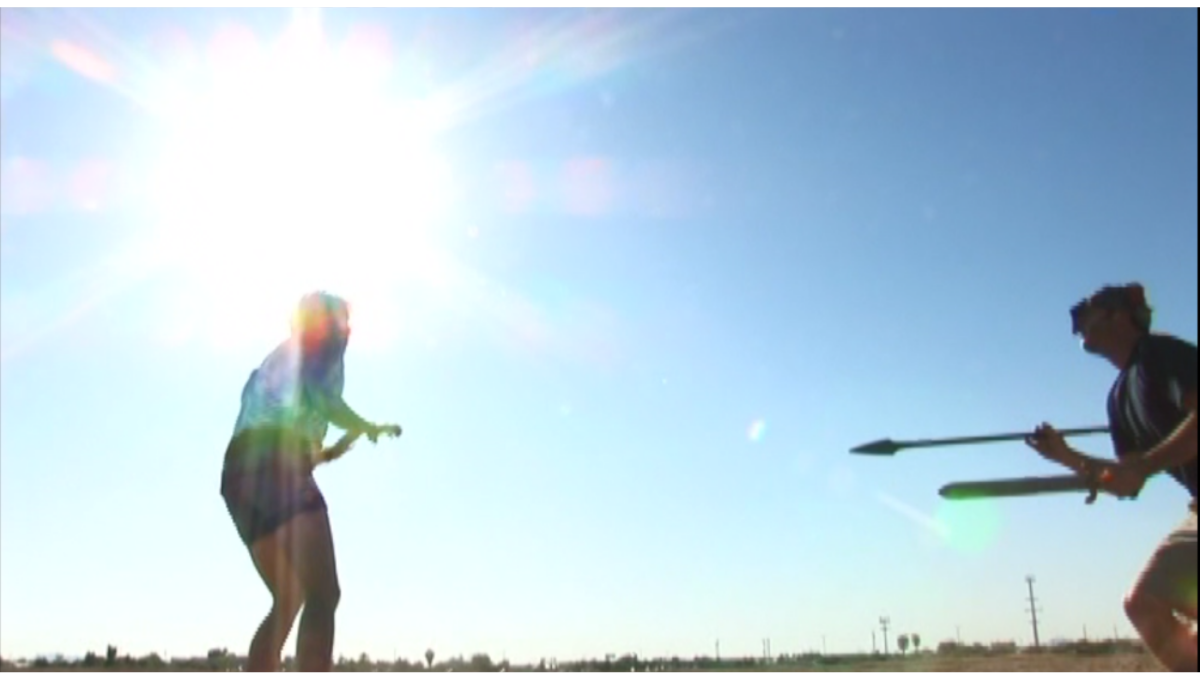
The moment is short-lived in the film, but Ross makes sure it leaves its mark. Immediately following their sword fight, he seamlessly enters a montage of Lori jogging through another dirt field. She is dwarfed by the buildings, fences and construction machines that surround her. A crossing guard sits at an intersection. This dirt field is just a dirt field, not the ancient sands of Troy that Lori and Anson conjured in their imaginations.
As Ross has aged, moments of freedom and release have appeared less frequently in his films. In interviews done around the release of 2012’s Tiger Tail in Blue, his first film about a married couple, he spoke of how we have to “steal time” for ourselves as we age and settle into careers and relationships. In his recent films, stealing time is not as easy for characters as it is for Anson and Lori when they strap on their toy armor to battle in the Arizona sun. Hohokam — even with all of its scenes of preoccupied characters drained from work or arguing with their partners — remains Ross’ most joyous film. His venture into dystopia reminds us how rare and fleeting these momentary breaks can be, but ultimately, Hohokam works to provoke a more active engagement with our surroundings, rather than allowing ourselves to be defined by them.
Follow our series on the Films of Frank V. Ross here:
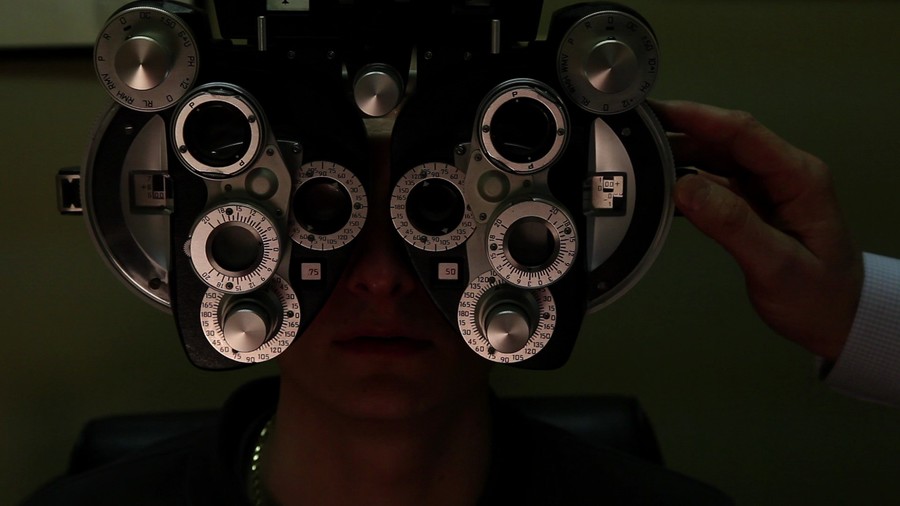
Follow Brett on Twitter and Letterboxd
(Split Tooth may earn a commission from purchases made through affiliate links on our site.)

